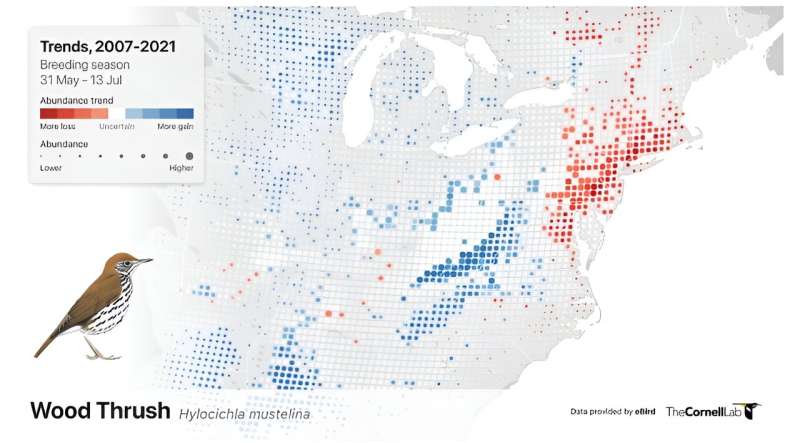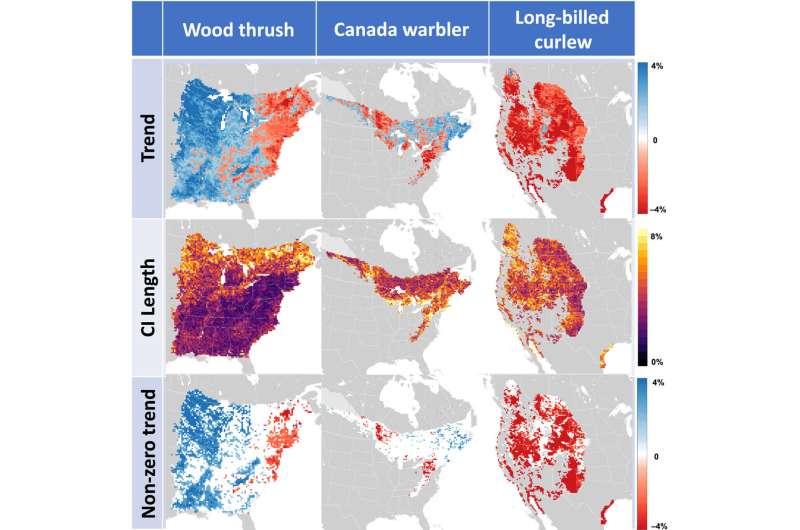This article has been reviewed according to Science X's editorial process and policies. Editors have highlighted the following attributes while ensuring the content's credibility:
fact-checked
peer-reviewed publication
trusted source
proofread
Novel machine-learning method produces detailed population trend maps for 550 bird species

Scientists at the Cornell Lab of Ornithology have developed a novel way to model whether the populations of more than 500 bird species are increasing or decreasing. The method solves a nagging statistical problem by accounting for year-to-year changes in the behavior of people collecting the data. The result is detailed trend maps for each species down to an eight-mile radius—a major boost for local conservation efforts. Scientists used an approach called Double Machine Learning. Details are published in the journal Methods in Ecology and Evolution.
"Changing human behavior presents a problem for statistical analysis of data collected by volunteers," explained lead author Daniel Fink at the Cornell Lab. "For example, is a particular species really declining in a region—or are there simply fewer people making observations in the bird's preferred habitat compared to past years?"
Birding behavior may change when people adopt new tools, get better at identifying birds, or go birding in new areas. Changes in human behavior become what is called a "confounding" factor. A confounding factor has an impact on the primary question being studied and can distort reality. In this case, changes in the recorded abundances of birds may be real, or they may be artifacts that appear because of changes in the observation process over time.

Double Machine Learning is applied to bird observation data collected by the Cornell Lab's global eBird program and then visualized with detailed maps. With Double Machine Learning, two types of patterns are "learned" and then identified in the data. One pattern is the variation in the reported counts of birds. The second pattern reflects variation in birders' behavior. The effect of the behavior pattern is then removed, leaving only variation in the actual recorded abundances of birds.
"Now, we have a way to analyze these data that produce robust estimates of population change, even for species and/or regions without rigorous monitoring programs," said Fink. "The ability to estimate trends while accounting for confounding factors inherent in citizen science data has the potential to fill important information gaps."
More information: Daniel Fink et al, A Double machine learning trend model for citizen science data, Methods in Ecology and Evolution (2023). DOI: 10.1111/2041-210X.14186
Journal information: Methods in Ecology and Evolution
Provided by Cornell University




















